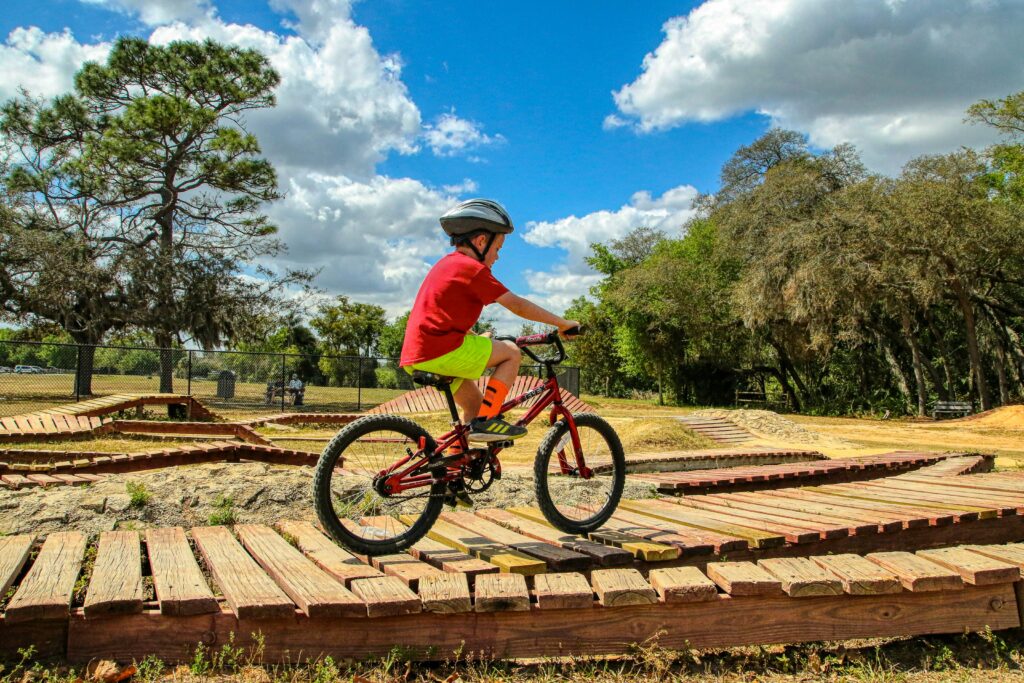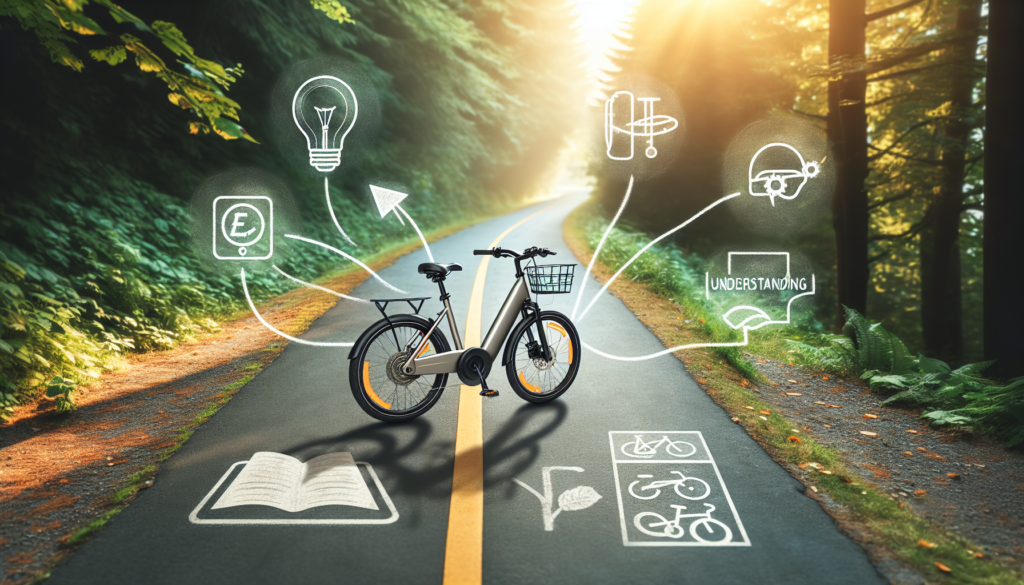Did you know that there has been quite a buzz recently about the use of ebikes on bike trails? With the growing popularity of these electric-powered bicycles, many enthusiasts are wondering if they are actually allowed on bike trails or if there are any restrictions in place. In this article, we will explore the regulations surrounding the use of ebikes on bike trails, shedding light on this hot topic and helping you understand whether you can hit the trails on your beloved ebike. So, let’s embark on this informative journey and find out if your favorite bike trails are open to the thrilling world of ebikes!

Introduction
What are ebikes?
Ebikes, short for electric bikes, are bicycles that are equipped with an electric motor to provide assistance when pedaling. They offer a convenient and eco-friendly alternative to traditional bikes, allowing riders to cover longer distances, tackle challenging terrains, and exert less physical effort.
What are bike trails?
Bike trails, also known as cycling paths or bike lanes, are dedicated paths or routes designed specifically for cyclists. These trails provide a safe and enjoyable riding experience, separate from motor vehicle traffic. They can be located in urban areas, parks, or natural settings, offering scenic views and varying levels of difficulty.
Legal Classification of Ebikes
Class 1 ebikes
Class 1 ebikes are pedal-assisted electric bicycles with a maximum assisted speed of 20 mph. They are equipped with a motor that only provides assistance when the rider is pedaling. Class 1 ebikes do not have a throttle, ensuring that the rider must actively contribute to the propulsion.
Class 2 ebikes
Class 2 ebikes are electric bicycles with a maximum assisted speed of 20 mph. Unlike Class 1 ebikes, they are equipped with a throttle, allowing riders to engage the motor without pedaling. This feature provides additional flexibility for riders who may not want to exert physical effort continuously.
Class 3 ebikes
Class 3 ebikes, also known as speed pedelecs, are capable of reaching higher speeds, with a maximum assisted speed of 28 mph. Similar to Class 1 ebikes, they require the rider to pedal for the motor to provide assistance. Class 3 ebikes are commonly used by commuters looking for faster transportation options.
Types of Bike Trails
Paved trails
Paved trails are bike paths that are surfaced with asphalt or concrete. They offer a smooth and even riding surface, suitable for riders of all skill levels. Paved trails are often found in urban areas and parks, providing a safe and accessible option for cycling.
Unpaved trails
Unpaved trails, also referred to as natural-surface trails, are paths that are typically composed of compacted dirt, gravel, or crushed stone. These trails are commonly found in natural settings, parks, and rural areas. Unpaved trails offer a more challenging and adventurous riding experience, suitable for off-road biking enthusiasts.
Mountain bike trails
Mountain bike trails are specifically designed for off-road mountain biking. These trails are usually located in hilly or mountainous areas, offering riders a thrilling and intense riding experience. They often feature obstacles, jumps, and technical sections to challenge the skills of riders.
Ebikes and Paved Trails
Rules and regulations
The permissibility of ebikes on paved trails varies depending on local and regional regulations. In some areas, all classes of ebikes are treated similarly to traditional bikes and are allowed on paved trails. However, certain jurisdictions may have specific restrictions or requirements, such as limiting Class 3 ebikes. It is crucial to familiarize yourself with the local rules before riding an ebike on a paved trail.
Speed limits
Paved trails often have designated speed limits to ensure the safety of all users. As an ebike rider, it is essential to adhere to these limits and exercise caution when sharing the trail with pedestrians or other cyclists. Common speed limits on paved trails range from 10-20 mph, depending on the specific trail and local regulations.
Shared use paths
Some paved trails may be designated as shared use paths, allowing the usage of various types of non-motorized vehicles, including ebikes. These paths typically have wider lanes to accommodate different users and may have posted guidelines for sharing the path safely. It is essential to be aware of and respectful towards other trail users, yielding when appropriate and maintaining a reasonable speed.

Ebikes and Unpaved Trails
Rules and regulations
The permissibility of ebikes on unpaved trails is determined by local regulations and land management policies. While some areas permit all classes of ebikes on unpaved trails, others may restrict their usage to specific classes or prohibit them altogether. It is crucial to research and abide by the regulations in place to maintain trail access for all users.
Designated trails
In some regions, specific trails within a larger network may be designated for ebike use. These trails are often selected based on their terrain, difficulty level, and environmental impact considerations. Designated trails allow ebike riders to enjoy the thrill of off-road riding while minimizing potential conflicts with other trail users.
Natural resource management
When allowing ebikes on unpaved trails, land managers and trail stewards must consider potential impacts on natural resources. Ebikes have the potential to cause greater trail erosion due to their increased speed and weight compared to traditional bikes. To minimize these impacts, trail maintenance and conservation efforts may be required, including erosion control measures and regular trail inspections.
Ebikes and Mountain Bike Trails
Rules and regulations
Ebikes’ usage on mountain bike trails varies widely depending on local regulations and land management policies. Some trails may permit all classes of ebikes, while others may have restrictions or outright bans. Since mountain bike trails often have specific guidelines for usage, it is crucial for ebike riders to respect these rules to maintain a positive relationship with the mountain biking community.
Mountain bike trail difficulty ratings
Mountain bike trails are typically classified into different difficulty levels to help riders choose trails suitable for their skill and experience. These ratings range from easy (green) to more challenging (blue, black, double black diamond). Ebike riders should choose trails that align with their skill level, considering both their own abilities and the capabilities of their specific class of ebike.
Safety concerns
Ebikes on mountain bike trails can raise safety concerns due to increased speeds and potential conflicts with other trail users. Riders should be mindful of their speed, especially on downhill sections, and yield to uphill traffic. Additionally, it is essential to maintain control of the ebike, especially when navigating technical sections or obstacles, to prevent accidents or collisions.

Benefits of Allowing Ebikes on Bike Trails
Accessibility
Allowing ebikes on bike trails increases accessibility for individuals who may have physical limitations or lack the stamina to ride traditional bikes over long distances or challenging terrains. Ebikes enable more people to enjoy the benefits of cycling, promoting inclusivity and expanding recreational opportunities.
Health and fitness
Ebikes can contribute to improved health and fitness outcomes. While they still require physical effort, the electric motor assistance can help individuals overcome barriers to physical activity, such as steep hills or long distances. Regular ebike riding can contribute to cardiovascular fitness, muscle strength, and overall well-being.
Environmental impact
Ebikes have a lower environmental impact compared to motorized vehicles, such as cars or motorcycles. By encouraging ebike usage on bike trails, communities can promote sustainable transportation options and reduce greenhouse gas emissions. Ebikes also contribute to a quieter and less congested trail experience, enhancing the enjoyment of all users.
Concerns about Allowing Ebikes on Bike Trails
Speed differentials
One concern associated with allowing ebikes on bike trails is the potential speed differentials between traditional bikes and ebikes, particularly Class 3 ebikes. The increased speed of ebikes can create challenges when sharing the trail with slower-moving cyclists or pedestrians. Education and awareness about proper trail etiquette and yielding are essential to mitigate any conflicts that may arise.
Trail erosion
The higher speeds and increased weight of ebikes can contribute to trail erosion, particularly on unpaved trails. This erosion can negatively impact the trail’s sustainability, leading to damage and reduced enjoyment for all users. Implementing erosion control measures and conducting regular trail maintenance can help minimize the impact of ebikes on trail integrity.
User conflict
Allowing ebikes on bike trails can sometimes create conflicts between different user groups, such as cyclists, pedestrians, and equestrians. Each user group may have different speeds, trail etiquette expectations, and safety concerns. Education, clear signage, and designated trail sections for specific user groups can help reduce conflicts and enhance the overall trail experience.

Examples of Ebike Policies on Bike Trails
Local policies
Local jurisdictions often have policies regarding the permissibility of ebikes on bike trails. For example, some cities or counties may allow ebikes on all designated bike paths, while others may have specific restrictions or guidelines. It is important to research and understand the local policies before riding an ebike on a particular trail.
State and national policies
State and national parks, forests, and recreation areas may have their own policies regarding ebike usage on bike trails within their jurisdiction. These policies can vary significantly, from complete bans on ebikes to allowing specific classes under certain conditions. Visitors should consult the relevant park or forest service websites for the most up-to-date information.
International policies
Ebikes’ permissibility on bike trails also varies internationally. Different countries have different regulations and policies regarding ebike usage, including whether they are allowed on bike trails. Travelers should familiarize themselves with the specific regulations of the country they plan to visit to ensure compliance and a smooth riding experience.
Growing Advocacy for Ebikes on Bike Trails
Organizations supporting ebike access
Many organizations actively advocate for ebike access on bike trails, recognizing the numerous benefits they offer. These organizations work to promote the responsible usage of ebikes, encourage the development of ebike-friendly policies, and contribute to ongoing research and education about ebike usage on trails.
Research and studies
Ongoing research and studies are being conducted to assess the impacts of ebike usage on bike trails. These studies explore areas such as trail sustainability, user satisfaction, and safety. The findings help inform policy decisions, trail design guidelines, and management strategies to ensure a positive experience for all trail users.
Public opinion
Public opinion regarding ebikes on bike trails has been shifting positively as more people recognize the benefits they provide. Surveys and feedback from trail users often demonstrate support for ebike access, particularly when regulations are in place to ensure responsible usage and minimize negative impacts. Public input and engagement are vital in shaping policies and regulations surrounding ebike usage on bike trails.
In conclusion, the permissibility of ebikes on bike trails is subject to local and regional regulations, with different classes of ebikes having varying allowances. Paved trails, unpaved trails, and mountain bike trails all have their own considerations when it comes to ebike usage. While there are benefits to allowing ebikes on bike trails, including increased accessibility, health and fitness benefits, and reduced environmental impact, there are also concerns such as speed differentials, trail erosion, and user conflicts. Ultimately, responsible usage, education, and thoughtful trail management are key to ensuring a positive and inclusive experience for all trail users, whether they are on traditional bikes or ebikes.


